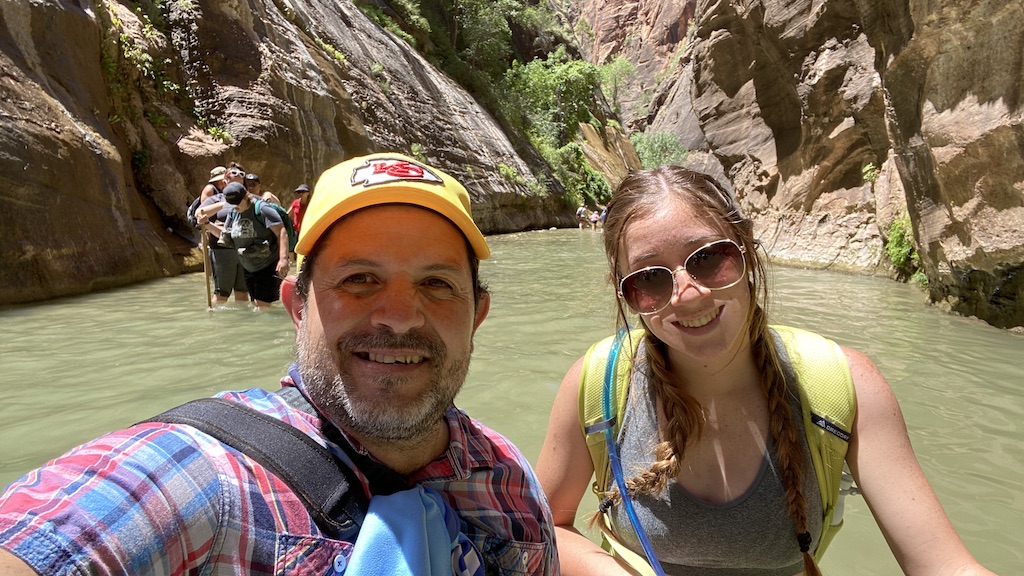Approximately 40 wildland firefighters continue to fight off the 24-acre Kolob Terrace Fire, in Hop Valley, Zion National Park. https://www.nps.gov/zion/learn/news/update-wildland-firefighters-continue-to-address-kolob-terrace-fire.htm
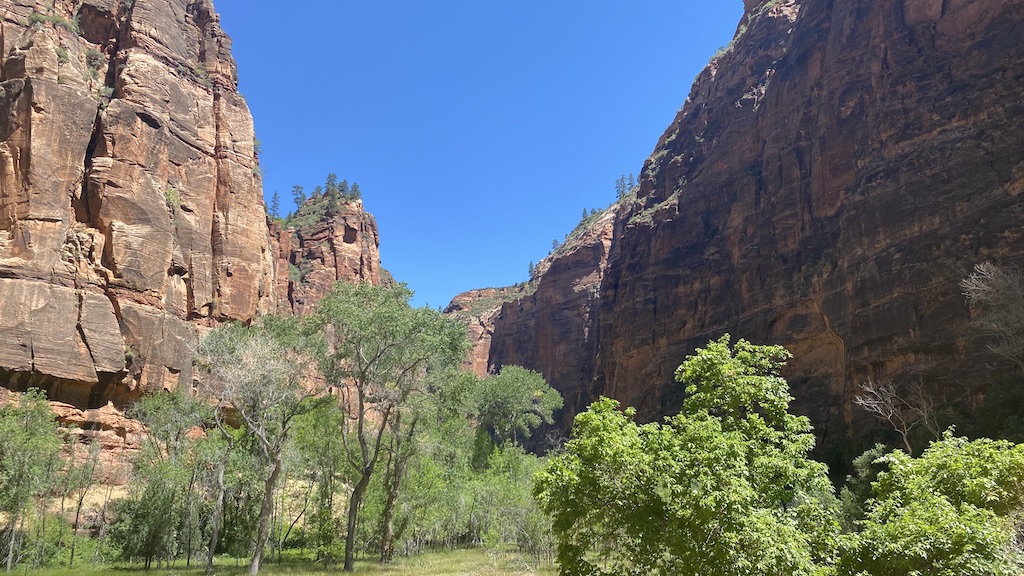
The beginning of the canyon is usually delineated as the Temple of Sinawava, a vertical-walled natural amphitheater nearly 3,000 feet (910 m) deep. The canyon actually begins much further upstream, however, and runs southward about 16 miles (26 km) through the Narrows to reach the Temple, where a seasonal tributary of the North Fork plunges over a tall waterfall during spring runoff and after heavy rain. The gorge then runs southwest through the national park, approaching 2,000 feet (610 m) deep in places. While the canyon rim is dominated by desert, the canyon floor supports a forest and riparian zone watered by the North Fork Virgin River. The gorge then merges with Pine Creek Canyon as it winds out of the national park and past the community of Springdale. The canyon’s end is where it meets the Virgin River, some 100 miles (160 km) northeast of Lake Mead, which the river ultimately flows into.
This was definitely the hike that Saydie and I were looking forward too. The Temple leads you to the Narrows. The Narrows is the narrowest section of Zion Canyon in Zion National Park, situated on the North Fork of the Virgin River and upstream of the main canyon, The Narrows is one of the premier hikes in the park and on the Colorado Plateau. The Narrows refers to both the 3.6-mile (5.8 km) bottom-up hike from the Temple of Sinawava to Big Springs, as well as the 16-mile (26 km) top-down hike from Chamberlain’s Ranch back to the Temple of Sinawava.
The Narrows was first descended (and named) in 1872 by geologist and explorer Grove Karl Gilbert as part of the Wheeler Survey. His party traveled from Navajo Lake through the Narrows to Zion Canyon and Springdale on horseback. John Wesley Powell had traversed the nearby Parunaweap Canyon (the East Fork of the Virgin) earlier in the same year.
From when Zion became a National Park (1919), tourists were guided up the Narrows on horseback well into the 1960s. The through-hike of The Narrows became popular starting in the late 1960s.
Unfortunately for Saydie and we will have to hike it on foot, and pay particular attention to no submerging our heads in the Virgin River. As if 2020 couldn’t get any worse, we get to Zion only to see this sign.

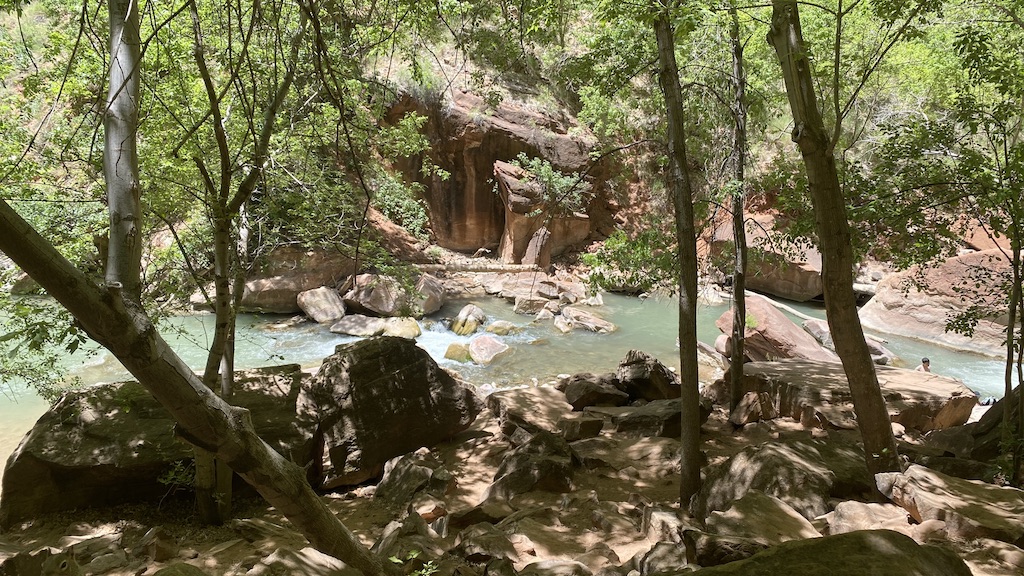
Hiking The Narrows is arguably the quintessential Zion experience. The Narrows can be hiked either as a top-down through-hike from Chamberlain Ranch to the Temple of Sinawava, or as an up-and-back bottom-up hike from the Temple of Sinawava. Hiking is done largely in the river as, for a third of the route, the river runs canyon wall to canyon wall. Water levels change from season to season; most hikers will wade at least waist-deep and many will swim a few short sections.
The Narrows hike from the bottom up starts at the Temple of Sinawava and ends as far as Big Springs at the 4.3-mile mark. As opposed to the top-down Narrows hike, this hike does not require a permit. Around the first bend is Mystery Falls, the exit point for Mystery Canyon. At the 2.5-mile point is Orderville Canyon, beyond which lies the Wall Street section of the Narrows, named after the sheer cliff walls surrounding the trail. After this section, the water gets periodically deeper and may require swimming in certain areas. One will need to negotiate a series of boulders at the 4-mile mark, and reach Big Springs at the 4.3-mile mark, where one is required to turn around. The entire hike up to Big Springs is 8.6 miles and may require up to 8 hours.
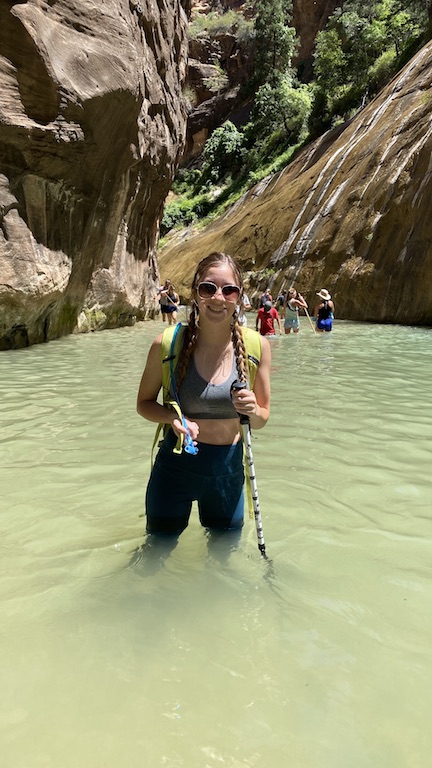
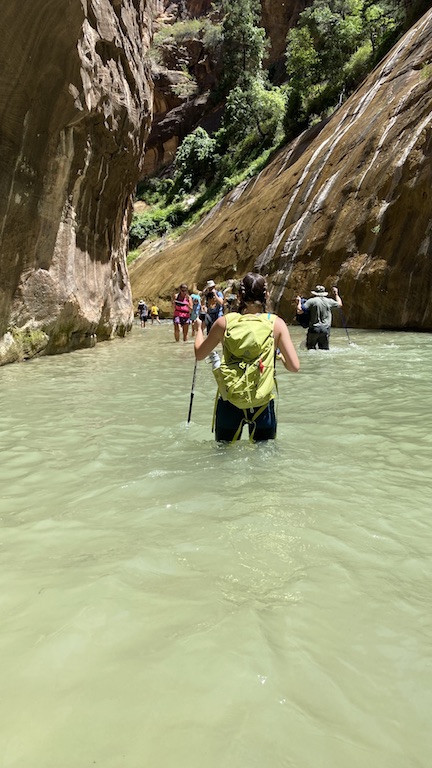
Hiking in the river is strenuous. The water is often murky and the bottom of the river is covered with rocks about the size of bowling balls. This makes proper footwear and bringing in trekking poles or a walking stick essential. The Narrows may be closed in the spring due to flooding while the snow melts off the upland areas to the north if the flow rate is higher than 120 cubic feet per second (3.4 m3/s). Thunderstorms can cause The Narrows to flash flood during the summer. Rain showers upriver can cause flash floods in the canyon without it raining over the canyon itself. Thus, hikers should exercise caution when hiking The Narrows during rainy periods as the winding canyon and sheer walls make approaching flash floods all the more sudden and difficult to evade.
